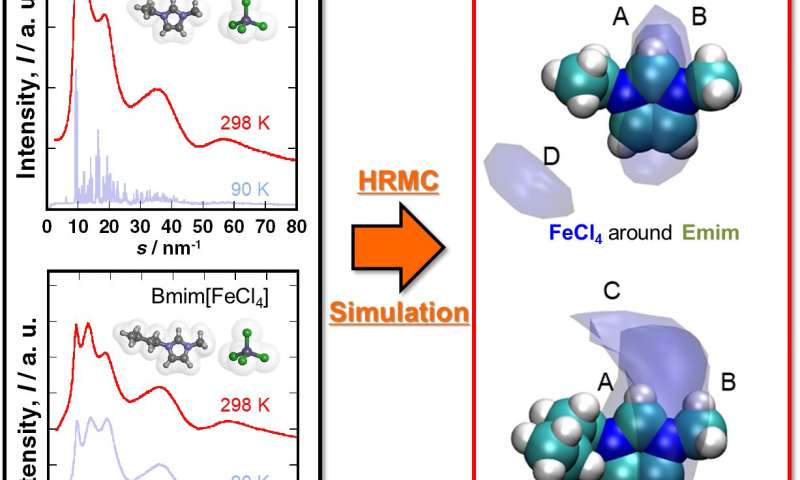A research team lead by Ryusuke Futamura of Shinshu
University investigated the response of magnetic ionic liquids
(MIL) to magnetic fields from the microscopic view points. Magnetic
fluids, which can respond to magnetic fields, can be made by
dispersing ferromagnetic nanoparticles in a solvent. Some pure
liquids that are not mixtures also respond to magnetic feilds. For
example, oxygen is a liquid around -200°C and is attracted to
magnets. In this study, pure magnetic ionic liquids Emim[FeCl4] and
Bmim[FeCl4] were examined in the microscopic scale. These liquids
are attracted to magnets at room temperature, but Emim[FeCl4] also
undergoes a change from paramagnetic to antiferromagnetic behavior
at 3.8K.
Magnetic liquid structure elucidated through hybrid reverse
Monte Carlo simulation




